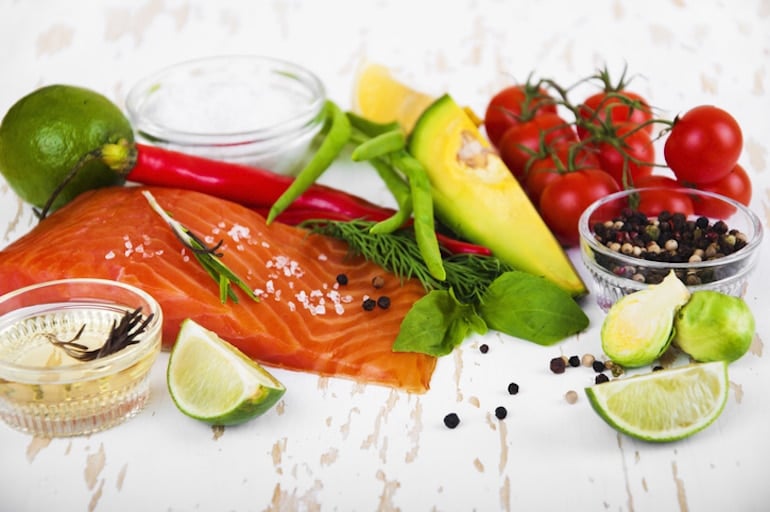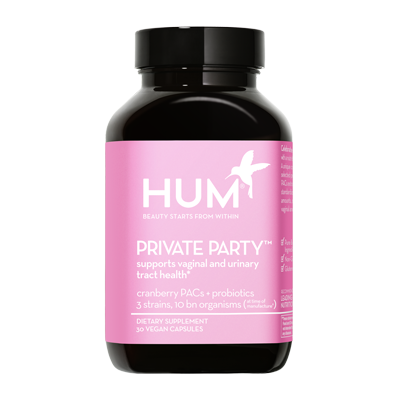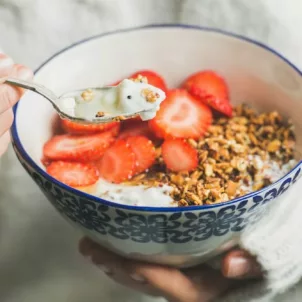THE WELLNEST • Food • Healthy Eating
The Best Anti-Candida Diet Foods from an RD
By Jessica Bippen, MS, RD •
February 14, 2020
Jessica Bippen, MS, RD, discusses candida overgrowth, its status according to different MD’s, and anti-candida diet foods that can help alleviate your symptoms.
You’ve been diagnosed with candida overgrowth… but now what? You’re sick and tired of feeling sick and tired. You want to kick candida overgrowth symptoms like extreme fatigue, brain fog, constant bloating, digestion issues, and vaginal discomfort to the curb—but don’t know where to start. Enter: the anti-candida diet.
While this diet lacks sufficient scientific evidence proving it works, there are plenty of functional medicine doctors who believe that it can help eliminate this condition. Keep reading to learn what to eat and what to avoid to abate your candida overgrowth symptoms through nutrition.

First, Is Candida Overgrowth Real?
Candida overgrowth occurs when naturally occurring Candida albicans, a type of yeast found in our microbiome, grows in excess. This excess can result in an array of unpleasant symptoms pertaining to cognition, energy, digestion, skin health, and more. It’s important to note that traditional Western medicine doesn’t recognize candida overgrowth as a true health condition. Thus, it can be difficult to diagnose and treat it with standardized protocol. With that said, many functional medicine doctors do recognize the veracity of candida overgrowth. Once diagnosed, they help treat it with an anti-candida diet food plan, plus a combination of probiotics and herbal and anti-fungal protocols.
What is the Anti-Candida Diet?
The anti-candida diet is a strict, short-term diet meant to alleviate the symptoms of candida infections, especially in the intestinal tract. While different practitioners may have slightly different protocols, the main component of the anti-candida diet is following a strict diet that eliminates sugar, gluten, caffeine, alcohol, and some dairy products. Based on these restrictions, you can think of it as a more regimented version of the paleo diet. Anti-candida diet foods include protein like high-quality meat, eggs, and fish; non-starchy vegetables; low-sugar fruits; and herbs and spices. Additionally, this diet plan encourages eating foods with anti-fungal properties like garlic, ginger, coconut oil, cinnamon, plus fermented probiotic foods that support healthy gut bacteria. However, don’t think of making this diet your norm. It’s essential to keep in mind that the anti-candida diet isn’t designed for long-term adherence. Many specialists and practitioners recommend following it for 10 to 12 weeks or until your symptoms disappear. During this period, you ideally want to keep your daily intake of carbs under 50 grams, as well as making sure to eat no more than one serving of fruit per day. Once you’re symptom-free and your doctor runs a candida overgrowth test to ensure it has cleared, you can slowly reintroduce the foods you eliminated.Foods to Avoid FOR CANDIDA OVERGROWTH
- High-sugar fruits: bananas, dates, dried fruits, mango, grapes, cherries
- Gluten: wheat, rye, barley, spelt
- Starchy vegetables: sweet potatoes, potatoes, winter squash, beans, lentils
- Dairy products: milk, cheese, cream (excludes yogurt, butter, and ghee)
- Sweeteners: agave, cane sugar, corn syrup, honey, maple syrup, molasses, artificial sweeteners
- Caffeine and alcohol: caffeinated teas, coffee, beer, wine, hard liquor
- Condiments with added sugar: ketchup, soy sauce, BBQ sauce, salad dressings, most vinegars (excludes apple cider vinegar)
Anti-Candida Diet Foods to Eat
- Low-sugar fruits: lemon, limes, grapefruit, berries
- Non-starchy vegetables: asparagus, Brussels sprouts, cauliflower, cabbage, broccoli, kale, celery, cucumber, eggplant, onion, spinach, zucchini, tomatoes
- Gluten-free grains: millet, quinoa, oats, buckwheat (in small amounts)
- High-quality protein: meat, chicken, eggs, salmon, turkey
- Healthy fats: avocado, olives, avocado oil, coconut oil, MCT oil, extra virgin olive oil
- Cultured dairy products: kefir, plain yogurt
- Herbs and spices
- Condiments: apple cider vinegar, coconut aminos, sauerkraut
- Natural no-sugar sweeteners: stevia, erythritol, xylitol
- Fermented foods: kimchi, sauerkraut, yogurt, fermented veggies
- Nuts and seeds low in mold: almonds, sunflower seeds, coconut, chia seeds, hemp seeds, flaxseed
Does the anti-candida diet work?
So far, results are inconclusive determining if the anti-candida diet works. However, despite the lack of evidence supporting the candida diet’s efficacy, many individuals swear by this diet as the only thing that helps alleviate their symptoms. If anything, the anti-candida diet has many potential benefits due to its focus on eating healthy foods. Any time you eliminate or reduce your intake of inflammatory food groups—such as refined carbohydrates, sugar, processed foods, and alcohol—you have the potential to feel better. Welcome benefits include increased energy, better digestion, weight loss, and a reduced risk for certain diseases.How to Get Rid of Candida Overgrowth
If you’re experiencing candida overgrowth symptoms that won’t go away, it’s best to consult a doctor. You’ll likely want to seek a functional medicine practitioner who specializes in or tests for candida. From there, it’s best to work with your doctor or a registered dietitian to ensure you’re following the right protocol and getting the necessary nutrients you need on a daily basis.The Bottom Line
The anti-candida diet focuses on a low-sugar, low-carbohydrate way of eating that also avoids gluten, dairy, caffeine, and alcohol. Because of its restrictions, you may find it challenging to successfully follow the anti-candida diet. It can be even more frustrating to follow the protocol and not experience adequate relief for your unwanted symptoms. That’s why it’s best to first work with a functional medicine doctor to get a proper diagnosis, then a dietitian to ensure you’re eating the right amount of anti-candida diet foods.More like this










